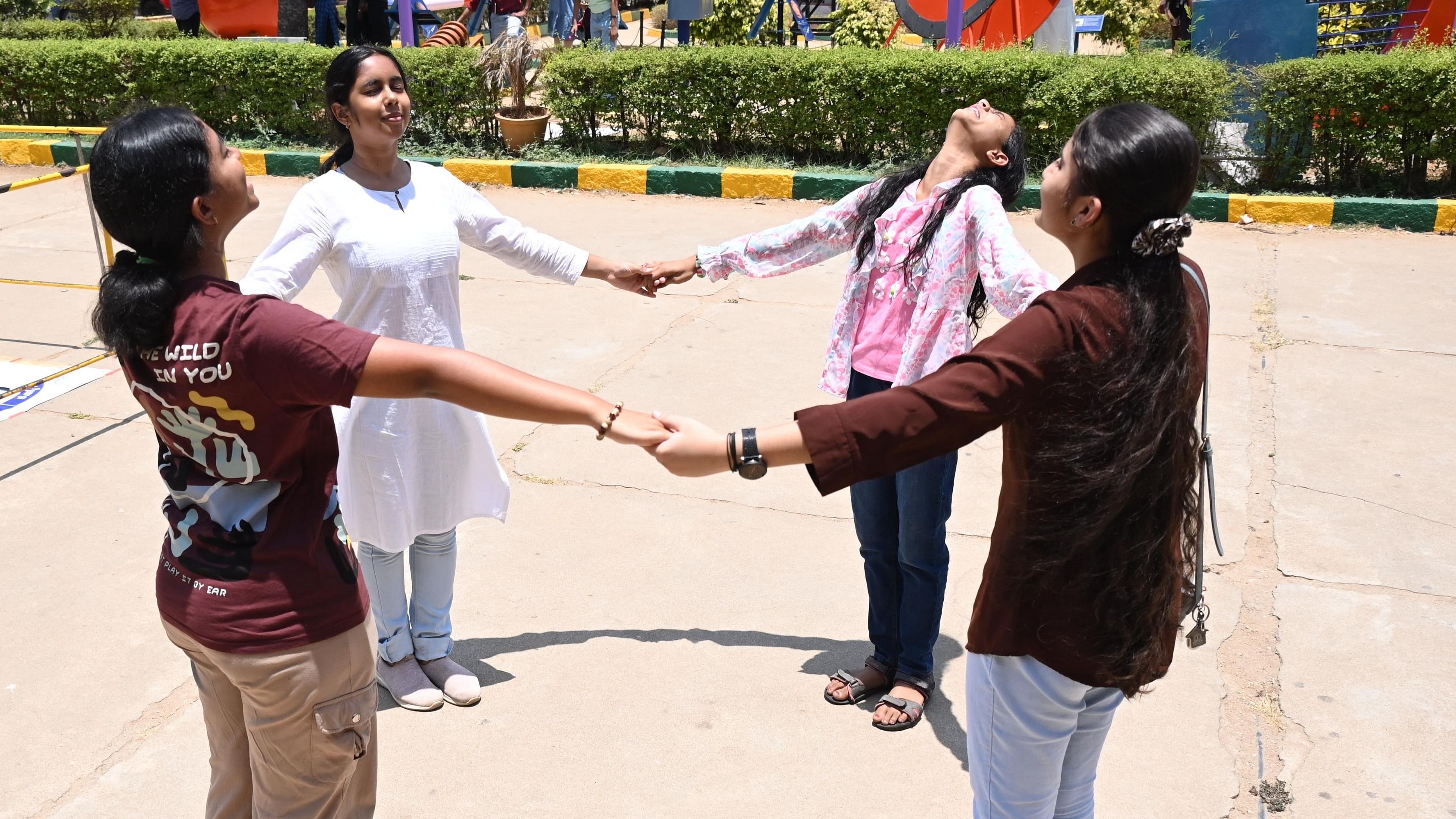
Students during a demonstration at the Jawaharlal Nehru Planetarium on Wednesday.
Credit: DH Photo/BK Janardhan
Bengaluru: The city witnessed its first ‘Zero Shadow Day’ (ZSD) of the year on Wednesday, which science enthusiasts celebrated with talks, workshops, and interactive sessions.
On ZSD, the sun reaches a position directly overhead. This causes vertical objects to cast their shadows directly beneath them, effectively making the shadows disappear.
On Wednesday, this phenomenon occurred at local noon (12.17 pm) for locations like Bengaluru, Mangaluru, and Chennai that share the same latitude.
The Indian Institute of Astrophysics (IIA) explains Zero Shadow Day as a consequence of Earth’s tilt. Unlike what we might perceive, the sun doesn’t always rise directly in the east, set in the west, or pass exactly overhead due to the Earth’s axis being tilted at 23.5 degrees relative to its orbit. This tilt is the reason we experience seasons, and it also influences the sun’s apparent path across the sky throughout the year.
On a ZSD, specific locations witness the sun at its peak, directly overhead, causing vertical objects to cast no shadows for a brief moment.
The sun is in the directly overhead position twice a year for locations between the Tropic of Cancer and Tropic of Capricorn, and these days vary with latitude.
Over 60 people, including students, who gathered at IIA’s Koramangala campus tracked shadow changes using simple sticks stuck in the ground (gnomons). At 12.17 pm, when the sun was directly overhead, the gnomons cast no shadows, confirming ZSD.
IIA partnered with Aryabhat Foundation in Bhopal, which is roughly at Bengaluru’s longitude value. Students at the foundation measured the length of the shadow at Bengaluru’s local noon and calculated its value, said Niruj Mohan Ramanujam, head of IIA’s science communication and outreach.
The Jawaharlal Nehru Planetarium also organised demonstrations and interactive sessions. Bengaluru will experience the next ZSD on August 18.